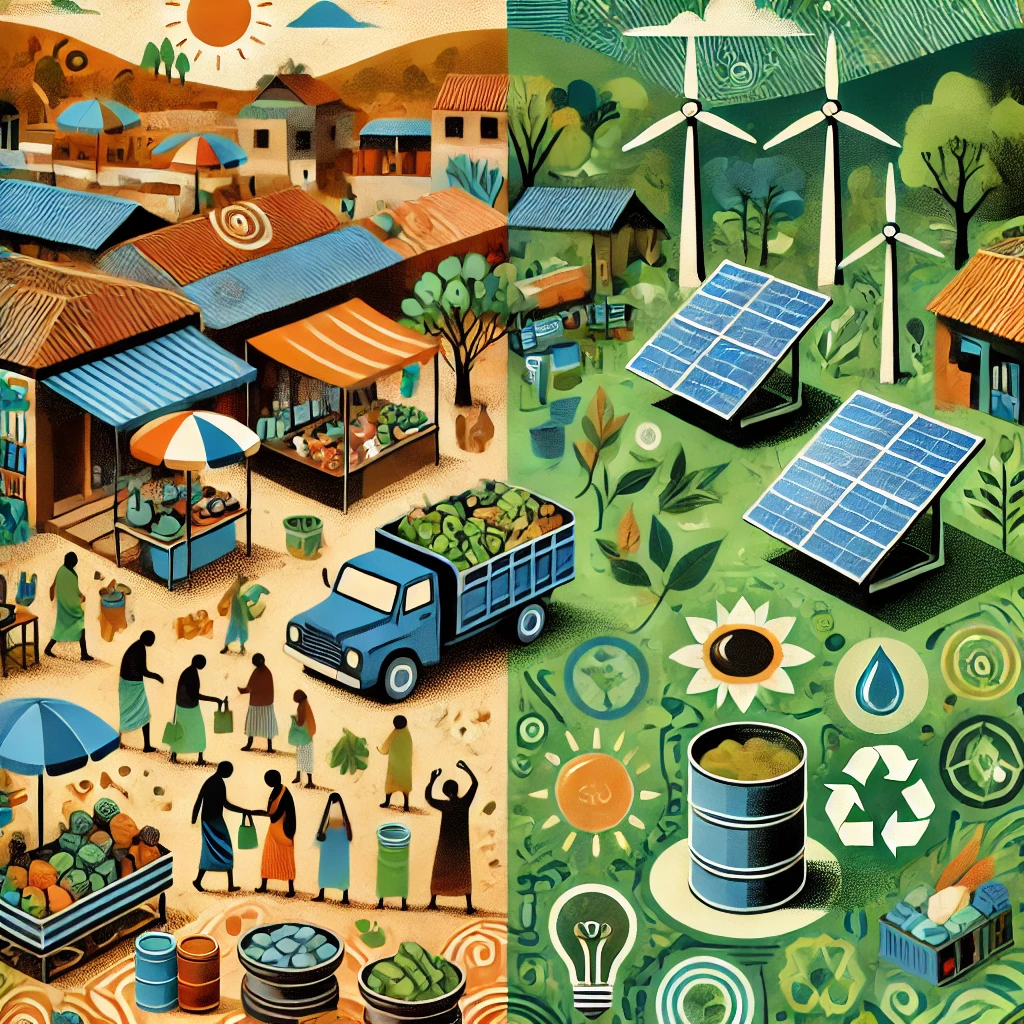
How Eco-Friendly Products Can Help Developing Countries and the Planet
Switching to eco-friendly products isn’t just good for the environment; it’s essential for building a sustainable economy. This change is especially important in developing countries where most of the world’s population lives. However, people in these countries don’t use eco-friendly products as much as they could. A study was done to understand why and what can be done to encourage more people to adopt these products.
Researchers used a model called UTAUT (Unified Theory of Acceptance and Use of Technology) to study 805 participants in a developing country. They found that understanding the environment makes people more likely to use eco-friendly products. However, many people in developing countries don’t have enough knowledge about environmental issues. The study also showed that men and women have different preferences when it comes to sustainable products, so different approaches are needed to reach them.
What Is a Green Economy?
A green economy is all about:
- Using resources efficiently.
- Lowering carbon emissions.
- Including everyone in economic benefits.
This kind of economy invests in eco-friendly projects and technologies to protect the planet. The idea became a global focus after the 1992 United Nations Conference. While many people care about the environment, especially in developed countries, their actions don’t always match their awareness. To fight climate change and protect resources, we need to change how we consume.
Challenges in Developing Countries
Developing countries face several problems in adopting eco-friendly practices:
- Limited money and resources.
- Lack of awareness about eco-friendly options.
- Weak infrastructure (e.g., few recycling facilities).
Most studies on eco-friendly behavior have been done in developed countries, where the situation is very different. For example, knowing about the environment helps people adopt eco-friendly products, but this factor hasn’t been explored much in poorer countries.
Key Takeaways from the Study
The study answered some important questions:
- What makes people in developing countries choose eco-friendly products?
- How do men and women differ in their interest in sustainable products?
- Which factors matter most for adopting eco-friendly habits?
Here’s what the study found:
- Environmental Knowledge: People who know more about environmental issues are more likely to use eco-friendly products. Education campaigns can make a big difference.
- Social Influence: Friends and family have a strong impact on decisions. If eco-friendly behavior becomes popular, more people will follow.
- Ease of Use: Simple, user-friendly designs encourage adoption.
- Perceived Benefits: People are more likely to use these products if they believe they’ll improve their lives.
- Cost vs. Value: Consumers in developing countries will pay extra for eco-friendly products if they see clear benefits.
- Supportive Systems: Infrastructure like recycling programs and government policies can make eco-friendly habits easier.
Gender Differences
The study showed that men and women value eco-friendly products differently. For example, women might care more about social norms, while men might focus on the product’s performance. Tailored marketing strategies can help reach both groups effectively.
What Can Policymakers and Businesses Do?
Here’s how to encourage sustainable habits:
- Education: Teach people about the benefits of eco-friendly products through schools, workplaces, and community programs.
- Targeted Marketing: Use strategies that appeal to both men and women.
- Better Infrastructure: Invest in facilities like recycling centers and green technologies.
- Incentives: Offer discounts, subsidies, or tax breaks for eco-friendly products.
- Community Influence: Work with local leaders and influencers to promote sustainable behaviors.
One way to make eco-friendly choices easier is through platforms like Green Find. This website connects individuals and businesses with sustainable products and services, making it simple to find and adopt green solutions. By providing detailed listings and reviews, the directory empowers users to make informed choices for a greener future.
New Research Tools for Better Insights
The study used a special method called the SEM-ANN model, which combines linear and non-linear analysis. This approach helped identify the most important factors for eco-friendly adoption, such as social influence and ease of use.
A Path to a Sustainable Future
Eco-friendly products can boost the economies of developing countries and protect the planet. By tackling barriers like low awareness and weak infrastructure, we can create a greener world. Governments, businesses, and individuals must work together to promote sustainable habits. With the right efforts, developing countries can lead the way to a sustainable future that benefits everyone.
References
Mustafa, S., Hao, T., Jamil, K., Qiao, Y., & Nawaz, M. (2022). Role of eco-friendly products in the revival of developing countries’ economies and achieving a sustainable green economy. Frontiers in Environmental Science, 10. https://doi.org/10.3389/fenvs.2022.955245